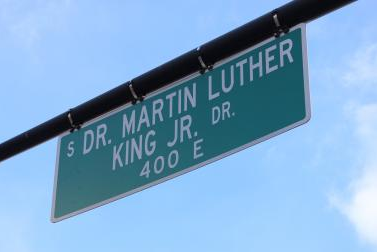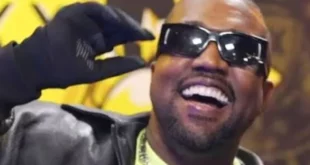Stuff Black People Don’t Like
July 28, 2015
The Confederate Flag must go, as must all memorials/grave stones/drawings/statues/and memories of the Confederacy.
Every street and school must be renamed.
It must all go, even the mural of Lee, Jackson, and Davis on Stone Mountain.

But the question one must ask is this: if Confederate symbols/flags/memorials must go, shouldn’t we reevaluate the more than 900 streets/drives/boulevards/trails/highways named after Martin Luther King?
Indeed, how many fatal and nonfatal shootings are there a week on streets named after Martin Luther King? [City streets named for Martin Luther King Jr. struggle across U.S., NJ.com, 1-20-14]:
A walk down the 6-mile city street named for the Rev. Martin Luther King Jr. yields plenty of images that would surely unsettle the civil rights leader: shuttered storefronts, open-air drug markets and a glut of pawn shops, quickie check-cashing providers and liquor stores.
The urban decay along Dr. Martin Luther King Jr. Drive in St. Louis can be found in other major American cities, from Houston and Milwaukee to the nation’s capital.
“It’s a national problem,” said Melvin White, a 46-year-old postal worker in St. Louis and founder of a 3-year-old nonprofit group that is trying to restore King’s legacy on asphalt. “Dr. King would be turning over in his grave.”
Nearly three decades into the observance of Monday’s federal holiday, the continuing decline of the most visible symbols of King’s work has White and others calling for a renewed commitment to the more than 900 streets nationwide named in the Atlanta native’s honor. The effort centers in St. Louis, where the small nonprofit is working to reclaim MLK roadways as a source of pride and inspiration, not disappointment over a dream derailed.
White’s goals are ambitious, his resources admittedly modest. A neighborhood park is planned across the street from the group’s headquarters. An urban agriculture project to encourage residents to eat healthy and grow their own food has preliminary support from nearby Washington University, one of the country’s wealthiest private colleges. Above all, Beloved Streets of America wants to build community from the ashes of what was once a thriving retail corridor when White was a child.
The template can be found just a mile away. Delmar Boulevard, which saw a similar decline, is now a vibrant retail corridor packed with restaurants, nightclubs, a renovated movie theater and a boutique hotel. The renaissance earned Delmar recognition in 2007 as one of “10 Great Streets in America” by the American Planning Association.
Journalist Jonathan Tilove, who wrote a 2003 book based on visits to 650 King streets nationwide, called the King byways “black America’s Main Street.””Map them and you map a nation within a nation, a place where white America seldom goes and black America can be itself,” he wrote. “It is a parallel universe with a different center of gravity and distinctive sensibilities. … There is no other street like it.”
Martin Luther King Drive/Street/Boulevard/Trail/Highway reprint a place where black America can be itself, and in turn create “shuttered storefronts, open-air drug markets and a glut of pawn shops, quickie check-cashing providers and liquor stores,” from sea to shining sea…
So the Martin Luther King Drive/Street/Boulevard/Trail/Highway Challenge begins: can any ascertain the number of fatal/non-fatal shootings on streets named after King in a day; a week; a month?
If the number far outpaces the aggregate of fatal/nonfatal shootings for a similarly named drive/street/boulevard/trail/highway found nationwide (George Washington, perhaps?), then perhaps it’s time we rename every drive/street/boulevard/trail/highway named after Martin Luther King.
For it seems a drive/street/boulevard/trail/highway named in his honor is the greatest harbinger of destruction, desolation, destitution, and degradation imaginable; then again, it’s just a place where black America can be itself…
 Daily Stormer The Most Censored Publication in History
Daily Stormer The Most Censored Publication in History


